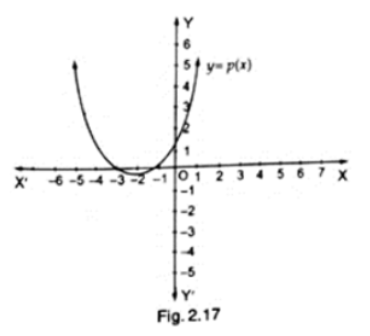In Figure, the graph of a polynomial p(x) is shown. The number of zeroes of p(x) is (a)4 (b) 1 (c) 2 (d) 3
Step by step video & image solution for In Figure, the graph of a polynomial p(x) is shown. The number of zeroes of p(x) is (a)4 (b) 1 (c) 2 (d) 3 by Maths experts to help you in doubts & scoring excellent marks in Class 10 exams.
Updated on:21/07/2023Topper's Solved these Questions
Similar Questions
Zero of the polynomial p(x)=2x+5 is
View SolutionThe graph of a polynomial f(x) is as shown in Fig. 2.21. Write the number of real zeros of f(x) . (FIGURE)
View SolutionIn Fig. 2.17, the graph of a polynomial p(x) is given. Find the zeros of the polynomial. (FIGURE)

View SolutionThe graph of a polynomial y=f(x) , shown in Fig. 2.18. Find the number of real zeros of f(x) . (FIGURE)
View SolutionThe graphs of y=p(x)are given in Figure below, for some polynomials p(x). Find the number of zeroes of p(x), in each case.
View SolutionFind a zero of the polynomial p(x)=2x+1.
View SolutionThe following figure shows the graph of y=p(x), where p(x) is a polynomial in variable x. The number of zeroes of the polynomial p(x) is

View SolutionThe graph of y=p(x), where p(x) is a polynomial in variable x, is as follows:

The number of zeroes of p(x) is _______________
View SolutionIf the sum of the zeros of the polynomial f(x)=2x3−3kx2+4x−5 is 6, then the value of k is (a) 2 (b) 4 (c) −2 (d) −4
View SolutionLook at the graphs in Figure given below. Each is the graph of y=p(x), where p(x) is a polynomial. For each of the graphs, find the number of zeroes of p(x).
View Solution